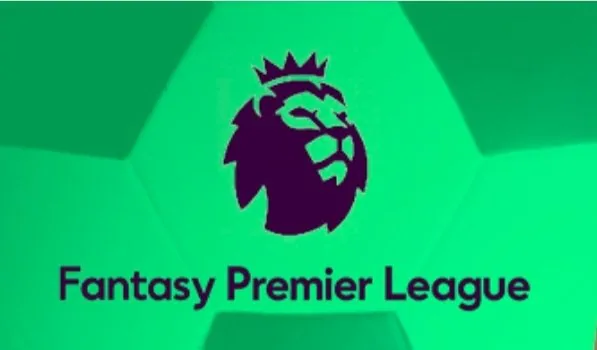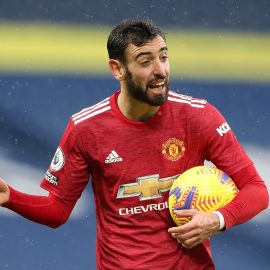I’m not a happy boy, and the game hasn’t even kicked off. I haven’t even had to endure the likes of Yossi Benayoun, Andrea Dossena and, later, David Ngog, masquerading as Liverpool players. I haven’t yet had to watch Craig Bellamy’s fizzing 25 yard strike clatter off a Kop End post, or see Dirk Kuyt’s miserable attempt at beating the annoyingly in-form Robert Green at the near post.
I haven’t had to listen to the predictable ramblings of commentators and pundits who really should use their brains more, moaning about Liverpool’s “lack of cutting edge” and how they are “top without ever looking convincing”.
No, the reason for my consternation, at 7.05, is simpler. Daniel Agger isn’t playing. Now I love Sami Hyypia, I love the service he has given Liverpool, the many headed goals he has popped up with, the fact that he treats every decision that goes against him with the same mocking grin. But I don’t like him tonight. And why?
Because he isn’t in my fantasy team, when he picks up six points for a clean sheet- and is unlucky not to add another six for a goal scored- I don’t feel the benefit. Welcome ladies and gentlemen to the logic-twisted world of Fantasy Football.
The Origins of Fantasy Football
“This is almost fantasy football”
It was a throwaway comment made by John Motson in 1988. He was watching Liverpool demolish Nottingham Forest 5-0 at Anfield in a game described by Sir Tom Finney as “the finest exhibition of attacking football ever seen”. Aldridge, Beardsley & Barnes were running riot, and Motson was caught up in the moment. He probably can’t even remember saying it. But someone heard him. And that someone thought “Hmm, fantasy football. Now what would that be like?”
Three years later, and Fantasy League Ltd was formed in London. Its aim? To provide a world in which football fantasy became football reality. A world in which John Barnes stood shoulder to shoulder with Paul Gascoigne, where David Seaman kept them out and Mark Hughes knocked them in, a world in which every armchair manager could do just that. Manage from the comfort of their armchair.
How many people have sat watching their team, not even their team in some cases, and said “I don’t understand why he pairs X with X, I would get Y in and then they would be sorted”? Well, Fantasy League Ltd decided that their revolutionary new product could make that happen. Sort of. Of course this fledgling company did not yet have the power to put Neil Jones in Alex Ferguson’s seat (something which I am still praying Reality TV will be able to do), but it did have the ability to allow “customers” to assemble a team of their own favourite players, from all across the league, and compete to see how well they did.
The concept was radical, yet simple. Each player in the Barclays First Division (the Premier League was still concealed beneath Rick Parry’s moustache at this point) was assigned a fictitious, and often debatable, cash value. Each manager/customer is handed an imaginary “budget”, and then asked to select a team, in traditional 4-4-2 formation, of players within that budget. Points awarded for goals scored, clean sheets for defenders and keepers, and points deducted for red and yellow cards. Enjoy.
And thousands did, despite the fact that there was no actual point to the game. No cash prize at the end of it, no gleaming trophy, and no flashlight presentations, just a letter saying “Well done” with a London postmark.
In 1993, Fantasy League went national thanks to the Daily Telegraph, who invested in huge promotion of the game, with a cash prize available to the overall winner at the end of the season. Armchair Fergies simply lapped it up, it was played by over 300,000 people, who scoured Teletext every Saturday afternoon (remember when Saturday afternoons would have nine Premier League matches on?) to cheer if Robbie Earle had popped up with that crucial five point contribution, to curse if Colin Hendry mistimed one and got his second yellow card, to hope and pray that someone, anyone, would score past Peter Schmeichel.
It became obsessive, the Sunday Telegraph printed detailed lists of all players and their points tallies, as well as a top 50 league table. You were never in it. Never. It was always someone with a normal sounding name from Chesham or Leamington, who you secretly suspected was a fake. Never you. But you didn’t care. Much.
Fantasy Football League – The TV Show
Taking it further in the mainstream was Fantasy Football League, a must-see football show which began as a Radio Five broadcast hosted by Dominik Diamond (jeez, this really is the 90s isn’t it?!). It was first broadcast on BBC2 in January 1994, and hosted by comedians David Baddiel & Frank Skinner. The concept was pretty much the same as the Telegraph game, only done with celebrities. Each celebrity would pick a team, and each week a pair of them would come onto the show, discuss their picks, then sit through half an hour of idle football chat, some hilarious observational clips, and “Phoenix From The Flames”– a farcical recreation of a famous football incident. Again, the public lapped it up.
With guests such as Des Lynam, Nick Hornby, Neil Morrissey & Dani Behr, the show was hugely popular until its last domestic airing in May 1996. It did return for special series’ for Euro 96, France 98 & Euro 2004, but by this time the actual Fantasy Football concept had been long abandoned in favour of sketches and clips, along with the saddening sight of Jeff Astle (former West Brom striker, and Skinner’s boyhood hero) lowering himself to a cameo karaoke appearance at the end.
Fantasy Football – Growth & Development
Today, whilst the concept of Fantasy Football is very much the same as it was all those years ago, the competition in the market is at an all time high. Just typing the words “Fantasy Football” into Google will return 28.5m results. Every national newspaper runs its own game (the original Telegraph game has this season drafted in Alan Hansen & Jose Mourinho to help sell it) and promotes the life out of it in the three or so weeks leading up to a new season.
These games are all available online now too, god bless the internet. In addition to that, every self respecting sports/gambling website has a game, and even the Premier League itself has spotted a chance- Fantasy Premier League is the most popular game around, with over 1.7m players worldwide.
Of course, it is hard to gain a foothold in a market so crowded, and with very little scope for development. After all, footballers only do a certain amount of things, so the game cannot really be revolutionised. And anyhow, the best Fantasy games are the simplest.
Therefore most sites have put a major emphasis on both presentation and promotion- the Hansen/Mourinho head-to-head on Telegraph shows this. New rules have crept in- in keeping with the modern game it is increasingly important to assemble not just a good team but a good squad, and budgets have risen from £25m back in 1993 to £100m this season- but essentially the game is the same. Pick your players and hope for the best.
Fantasy Football Rules
Of course with so many games on the market, rules can differ from one game to the next, but using the Premier League Fantasy Football as an example, many games tend to follow a similar pattern:
Budget – It’s the first question any self-respecting manager will ask his chairman when he even thinks about stepping into a job- “how much is in the kitty?”– Well in Fantasy Football’s case this figure usually tends to be £100m. No wonder Mourinho loves it.
Squad – This can vary. Some games have adapted to the rotation policy of the modern game and insist on a 15 man squad, with automatic substitutes brought in to compensate for non-playing team members. But some, such as the original Telegraph game, stick to the basic eleven man squad. Most games however limit players to no more than three players from the same club.
Formation – Ah, for the days of 4-4-2 eh? The original Fantasy Football game was much more rigid. You picked a keeper, four defenders, four midfielders and two forwards. But as modern roles have changed, the game has adapted as well. Now players can usually switch between 3-5-2, 3-4-3, 4-3-3, 4-4-2, 4-5-1, 5-4-1 or 5-3-2 in order to cram in as many of their favourites as possible. Guardian.co.uk has even gone that step further, and wannabe Benitez’s can tinker with 4-2-3-1, 4-1-2-1-2 or any other creative formation that would have Andy Gray’s magic pen running out of magic ink.
Captains – Some games now offer the option to name a “captain” before each set of fixtures, the captain will receive double points for that week, and so selecting him is not simply a case of handing it to the man who shouts loudest or gives the least away in press conferences.
Transfers – Again, in keeping with the modern game, transfers have become an integral part of the modern Fantasy game. The frustration felt by seeing your £3m midfield bargain pick up a torn Achilles tendon in August has been tempered somewhat by the introduction of a transfer system which allows players to make a set amount of transfers per week/month. Sometimes each transfer will cost you a couple of points, or sometimes you will be limited to a certain number of transfers each week/month/season. Depends on the game.
Goals Scored – There is no greater sight in football than a goal being scored, especially if the goalscorer happens to be in your team. Most games offer something along the lines of
- +4 points for a goal by a striker
- +5 points for a goal by a midfielder
- +6 points for a goal by a defender
Assists – Ever been frustrated that the tap-in merchant gets all the glory and the headlines, whilst the tireless winger who spent the whole game sticking balls on his overpaid head has to make do with a background role? Well fear not, most games offer at least +3 points for an assist.
Clean sheets/goals conceded – The best teams are built from the back, so they say. There is no point having a 25 goal a season hero up one end if at the other end your defence and keeper are chucking them in at double that rate. Most games offer +4 points for a clean sheet by a defender or keeper, taking away -1 point for each two goals conceded. In addition to this, perhaps in light of the increased defensive responsibility placed on midfield players, they are now often given +1 point for a clean sheet.
Bonus points – This is a concept used in a few games- most notably Premier League’s effort- whereby three players receive ascending bonus “man of the match” points based on their performance in a game. Hence, a keeper who makes a string of fine saves could receive +3 bonus points, whilst a dominant midfield general could receive +2. This is a good concept as the bonus points are not always issued to the winning side, or to the headline grabbers.
Yellow/Red Cards – Ill discipline is never embraced in football, and in Fantasy Football that is no different. Most games deduct -1 point for a yellow card, and -3 points for a red. And unlike the real world, there is no appeals process in Fantasy Football.
Penalties missed/saved – And finally, the old spot kicks. Whilst points are rarely deducted for penalties conceded, meaning that your clumsy oaf of a centre half can be bailed out of another wayward lunge by a misfiring striker, a missed penalty will usually mean at least -3 points, whilst a penalty save for a keeper will give them +3 points. It’s a cruel world.
More complicated rules come into play in individual games, with the Guardian’s effort particularly detailed in awarding points for things such as: shots on target, clearances, tackles won and interceptions, but the general rules are those listed above.
Fantasy Football Leagues
One more recent idea that Fantasy Football organisers latched onto was the idea of allowing players to run and organise their own mini-leagues, adding a competitive edge to games. No more scouring the Top 50 on Page 77 of the Sunday Telegraph to see if your name has miraculously appeared, now players could be the toast of their school, office, street or football team, and the League Table will be online for all to see.
Most games allow any player to set up a league, and through the use of a League Code, this player can invite other players to join in. It has certainly spiced up my own Fantasy Football experience- remember how angry I was about Agger’s omission? Well imagine how I felt ten minutes later when my league leader texted me with a “Haha no Agger, and Luke Young got me a clean sheet on Saturday”! Not good.
In addition to personal leagues, players are automatically entered into leagues for fans of their own club, and into their own country’s individual league, whilst PremierLeague.com has come up with a novel idea this season of placing each team into a 20 team “Head to Head” league, which pits teams together, much like a regular Premier League season, in 38 fixtures, with three points for a win, one for a draw and only disappointment for a defeat.
Also Read:
Fantasy Football Games
The Top Five Fantasy Football Games of 2008
Best Fantasy Football Tips
Premier League Fantasy Football Review
Add Sportslens to your Google News Feed!






